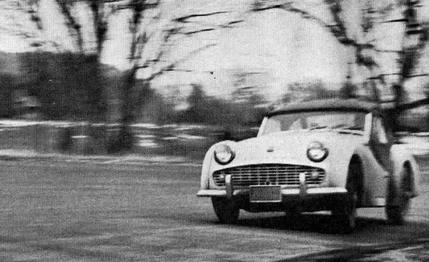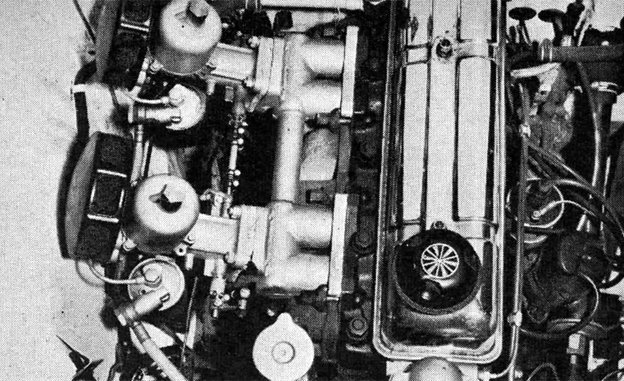
 Archived Road Test
From the March 1958 issue
Archived Road Test
From the March 1958 issue
Seldom, if ever, remembering back over the last few years, have we ever met a man who bought a TR2 or a TR3 and regretted the purchase. We well remember the first time back in '54 when we climbed into a test TR2, one of the very first in this country. After a day with the car we were left wondering how they could bolt together that much car for so little money — it was one of those few cars that one is actually reluctant to clamber out of. Now, four years, loads of test miles and two models later we still get the same feeling — even more so. For sheer fun driving, the TR3 for '58 is hard to beat regardless of price.
The paramount changes in this model are in styling. The new latticed grille opening is recessed into a suggested snout-effect, a la Ferrari. The headlight bulges are smaller, and are also incorporated into the theme of the car, and of course are sealed beams. Across the hood the name is spelled out in large (but not too large) letters. A fuller and sturdier bumper spans the front, protecting the headlights and fenders as well as the grille. The appearance is a lot smoother because of these changes.
The TR3 supplied us by Standard-Triumph Motor Company was not a super-tuned cream puff. Service manager Peter Snow felt that the best way to evaluate a Triumph is to test the one that the next customer would have bought, so he just drove one out and gave it to us. This one is now a demonstrator.
But drive it we did! When we picked up the car, the odometer read thirty-five miles. Before making performance runs, or road tests of any kind, we just drove, putting over two thousand miles on the car in two weeks. This mileage ranged from close New York City traffic to ranging up to Belleayre Mountain on the Thruway for a week-end of skiing. The car behaved no matter what we did to it, averaged 26 mpg for the first thousand, and is now delivering in the order of 28 mpg. Unquestionably it will keep getting better. So far we've added no oil.


The engine, as well as the gearing and other mechanical components, is identical to last year's Triumph engine, exactly — right down to the last bolt. There is plenty of power, even around 2000 revs, but the engine likes to go over the 3000 mark. This is the zone, 3000 to 4500, where you really move out when you punch the throttle.
The gear box on our new car was tight, but by the end of 2000 miles it slipped easily from gear to gear. The hydraulically-operated clutch is easy to work, gradually engaging, and positive when it pops in. But the short gear shift lever is perhaps the nicest feature in this department: we changed gears by reaching out and taking hold of the rubber dust cover on the stick, and changed gear slots by moving just the thumb. It's as easy as that.
Acceleration can be neck snapping if you want it to be: on the other hand the smooth-engaging clutch and good torque characteristics at the low end permit gentle take-offs, too. Two thousand revs is forty mph in fourth, but this same 2000 is plenty to get you off the mark, if you want smoothness and aren't in a hurry.
The brakes leave absolutely nothing to be desired. We made more than ten consecutive stops from sixty miles per hour — hard stops with just enough pressure to keep from locking the wheels. The adjustment of the rear (drum) brakes was faulty, and despite the fact that on every stop the right-rear wheel locked, our gauge reading was in the order of 2/3 g, or approximately 70% efficiency on every stop. Apparently disc brakes of this type and size are able to do most all of the stopping. It is interesting to ponder, however, how we would have stopped if the brakes had been adjusted perfectly! The brakes felt as good when we finished as they did when we started.